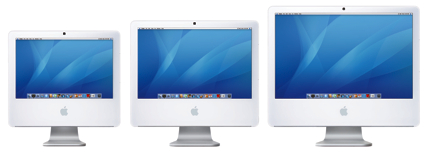 At one point in my life, I’d been a Mac lover. In fact, these days I still find myself longing to use one of my older Macs rather than my latest Windoze (or Linux) powered PCs. There’s this aura of “cool” over using a Mac instead of a PC. I mean, if you have two equally handsome guys at the cafe each working on laptops, and one’s using a high-end Dell and the other a MacBook Pro, whom would you find more interesting?
At one point in my life, I’d been a Mac lover. In fact, these days I still find myself longing to use one of my older Macs rather than my latest Windoze (or Linux) powered PCs. There’s this aura of “cool” over using a Mac instead of a PC. I mean, if you have two equally handsome guys at the cafe each working on laptops, and one’s using a high-end Dell and the other a MacBook Pro, whom would you find more interesting?
(Of course, the answer here is neither. Being a guy, I’d be more interested in the Mac. What were you thinking?)
When Steve Jobs confirmed the then-prevalent rumor that Apple was switching to Intel processors, it seemed like the whole world was turning upside-down. Macintosh computers, after all, ran on the RISC-based (reduced instruction set chip) PowerPC which was touted to be more powerful than the usual Intel chips regardless of the clock speed. Intel, after all, was using CISC (complex instruction set chip) and the information architecture was vastly different. Apple proudly marketed the PowerPC as being able to process information more efficiently, hence raw speed was not needed. This was the era of the “Megahertz Myth,” where faster was not necessarily better. Or so Apple claimed.
But that all changed, as we know, when the MacBook Pro came out a bit after Jobs’ announcement at the Worldwide developers conference 2005. The Apple ad said “Five times faster than the PowerBook G4.” Mac afficionadoes everywhere must have screamed expletives upon seeing this ad. How can Apple market their latest Intel-based notebook–I repeat, Intel-based–to be faster than the G4, when all these years they’ve been saying the G4 beats the heck out of Intel chips?
Such is the world of marketing. Some were wondering, was Apple lying to us all along?
In a way, perhaps. I guess that’s what marketing can be.
Just recently, even the Core Duo generation of Apple computers has already been surpassed, with the introduction of the workstation-class Mac Pro (four cores!) and the iMac upgrade. Not only did Apple upgrade its entire iMac line to Intel Core 2 Duo, but it ups the ante, with the introduction of the 24-inch iMac.

Here are some insights and reviews of the new Core 2 Duo iMac line.
Macworld finds the processor upgrade worth it, particularly because of performance gains of at least 10%. What’s more important is that the use of Core 2 Duo means the iMac family is getting closer to the capabilities or the Mac Pro.
More significant, the 2.16GHz system narrowed the performance gap between iMac and Mac Pro product lines. With twice the number of processor cores, all running faster than the iMac, the Mac Pro had a definite advantage in this match up. But because not all applications and tasks take full advantage of the Mac multiprocessing capabilities, most results showed the Mac Pro between 20 and 30 percent faster than the 2.16GHz iMac. I expect that test results of the new 24-inch model—with its faster graphics and the optional 2.33GHz processor upgrade—could close this performance gap even further.
Engadget discusses the rumor that the 24-inch iMac’s graphics card is upgradeable. This is supposed to be an advantage, since most Macs are known to be disposable computers–this means they’re not as upgradeable as PCs, since the parts are usually either proprietary or specialized. Still, there’s no knowing what the future holds in terms of compatibility with third-party peripherals. Hey, many old macs work with third-party parts.
[T]he news that the 24-inch iMac’s graphics card is potentially upgradable is causing such a stir. Apparently Apple decided to opt for a Mobile PCI Express Module (MXM for short) as the connection method for the 24-inch iMac’s graphics card. This standard was originally designed by NVIDIA for use in high-end gaming laptops — indeed, the MXM’s official page exclusively mentions “upgradeable notebook graphics”. Unfortunately for the aforementioned mid-range Mac dreamers, this is far from a viable upgradeable graphics card solution. For a start, Apple has said that users won’t have access to the graphics card and even if hackers succeed in gaining access to the slot, there are currently no stand-alone MXM compatible graphics cards on the market: that makes this the modern day equivalent of the infamous mezzanine slot from the original, supposedly expansion slot-free CRT iMacs. So, if you’re a budget-minded Mac user comfortable with tinkering around in your machine, you better get back to praying for that Cube resurrection.
What to do with the latest, fastest iMacs? Be wowed by the large screen and be overwhelmed by the speed!